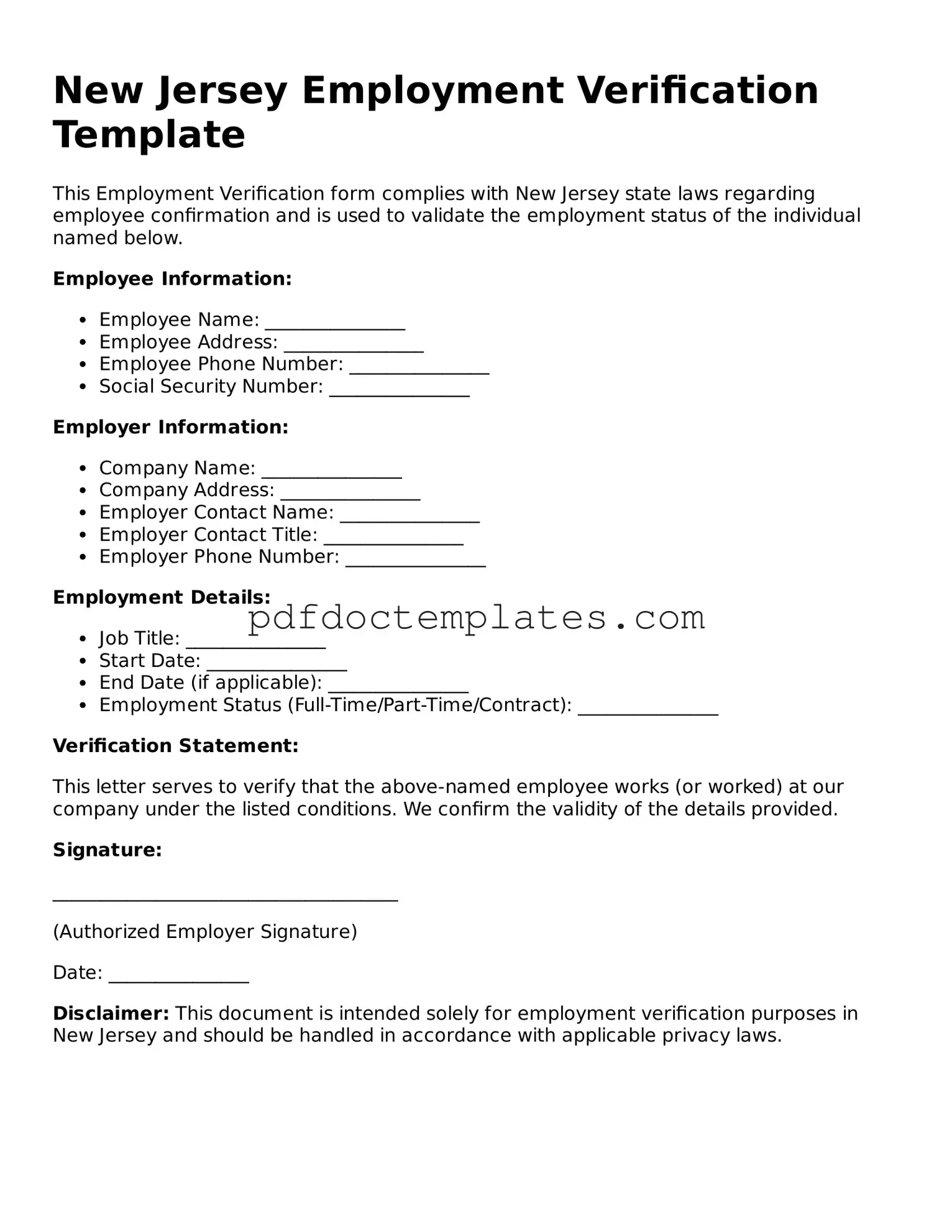New Jersey Employment Verification Template
This Employment Verification form complies with New Jersey state laws regarding employee confirmation and is used to validate the employment status of the individual named below.
Employee Information:
- Employee Name: _______________
- Employee Address: _______________
- Employee Phone Number: _______________
- Social Security Number: _______________
Employer Information:
- Company Name: _______________
- Company Address: _______________
- Employer Contact Name: _______________
- Employer Contact Title: _______________
- Employer Phone Number: _______________
Employment Details:
- Job Title: _______________
- Start Date: _______________
- End Date (if applicable): _______________
- Employment Status (Full-Time/Part-Time/Contract): _______________
Verification Statement:
This letter serves to verify that the above-named employee works (or worked) at our company under the listed conditions. We confirm the validity of the details provided.
Signature:
_____________________________________
(Authorized Employer Signature)
Date: _______________
Disclaimer: This document is intended solely for employment verification purposes in New Jersey and should be handled in accordance with applicable privacy laws.
